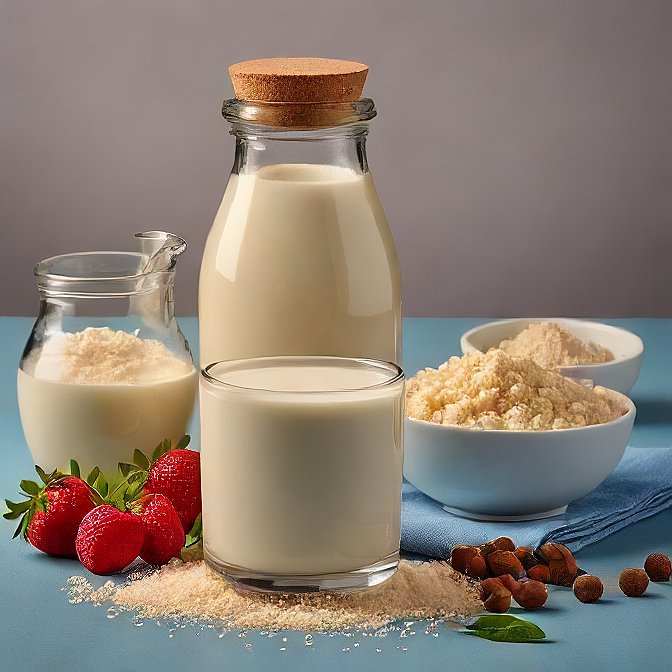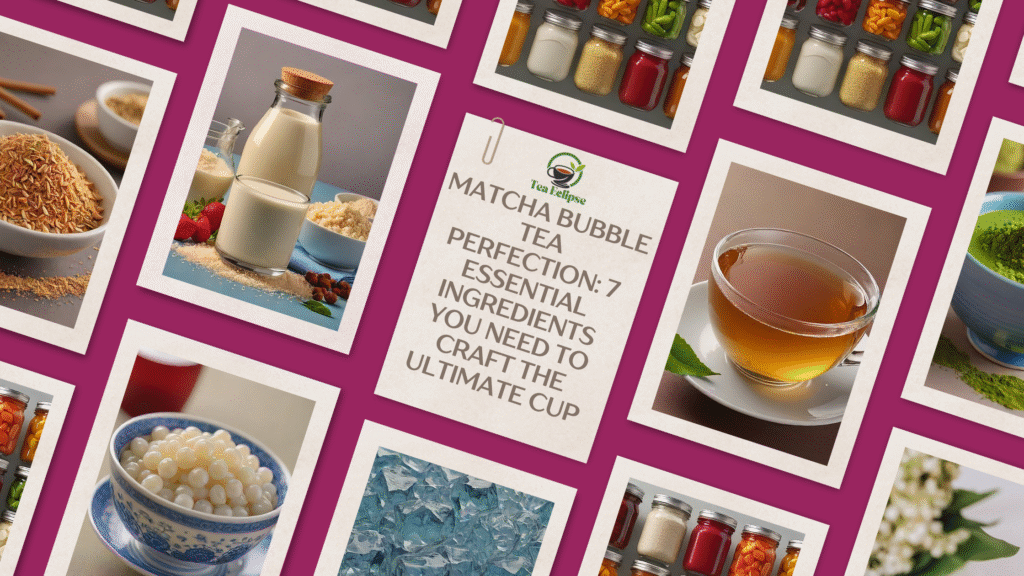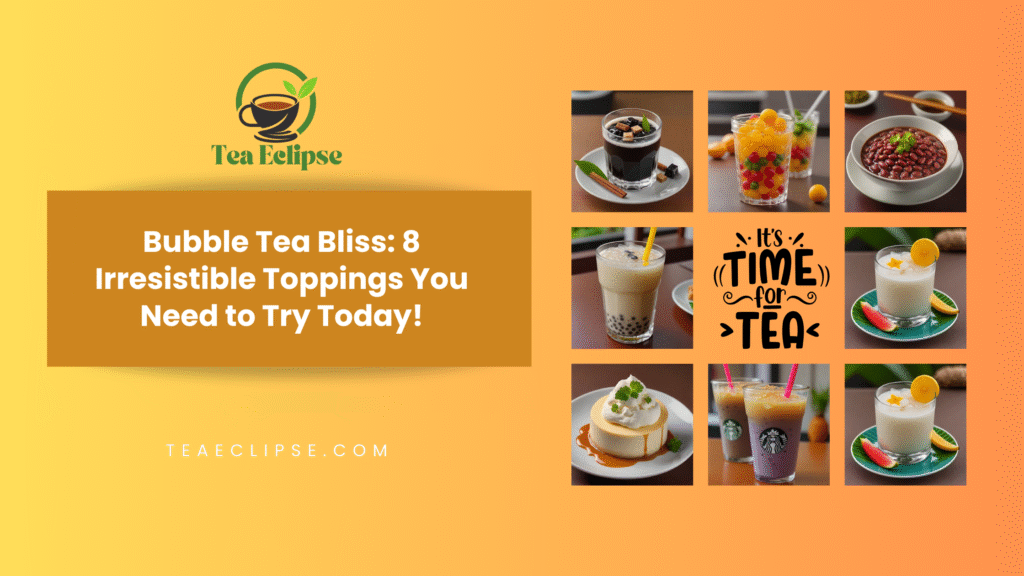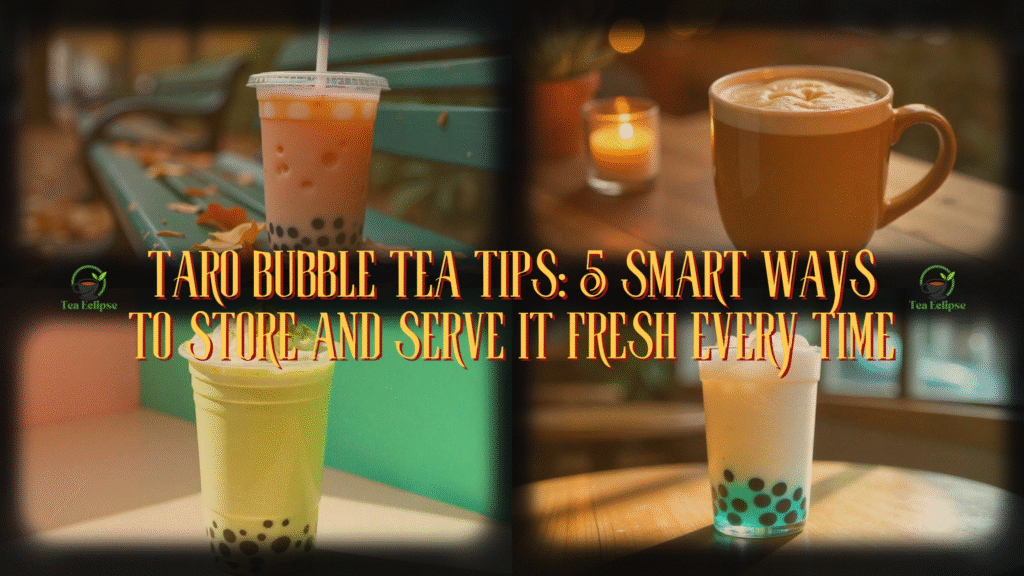Table of Contents
Introduction: Why Matcha Bubble Tea Is the Ultimate Fusion Drink
In recent years, matcha took the stage in the domains of cafes and health-oriented scenery, and there is a reason for it. This zesty green tea powder, which took centuries to make its way to the Japanese tea ceremony, is also making its way into most of our preferred lattes or smoothies. Meanwhile, bubble tea, a Taiwanese creation comprising tapioca balls, has spread over the world like a bush fire, and it is the sweet and creamy texture that has, in turn, become a cult.
Matcha Bubble Tea is a combination of the two trends in a single beverage, and it is both refreshing and hedonistic. This earthy and mildly bitter flavor of matcha with the fluffy milk and thick consistency of tapioca pearls goes well together. It is not always pleasant; it is a matter of senses as well.
Matcha Bubble Tea is the solution whether you need to cut down on the number of sweet drinks you have on a daily basis, or you need a healthy way of spending the afternoon pick-me-up. It is rich with antioxidants and nutrient-packed. The energy that is offered by the L-theanine in matcha is a calm form of energy, and can also be dispelled to suit whatever your tastebuds and limitations are.
In this guide, you will get to know about the 7 ingredients that are necessary to make the perfect Matcha Bubble Tea at home. This simple outline, covering everything, including selecting the appropriate grade of matcha to selecting the best dairy or non-dairy milk, was created to allow anyone to make a cafe-quality drink in their home with ease, enjoyment, and a good photo to share.
So, here we go, let’s get father to your ideal matcha-moment!
1. High-Quality Matcha Powder – The Star of the Show

In the case of Matcha Bubble Tea, there is nothing more significant than the selection of matcha powder. Green tea powder is the core and essence of the beverage, and as such, will make a difference in the color, flavor, smell, and health effects of the drink.
Ceremonial vs. Culinary Grade: Which Is Better for Bubble Tea?
- The youngest tea leaves are used to produce ceremonial grade Lionmatcha, and they are considered to be naturally sweet and subtle in their flavor, in addition to having a light green color. It is ideal to drink, and it has a smooth flavor.
- Matcha of a culinary grade is also stronger, with a slightly bitter taste, and should be blended with other ingredients; it is suitable as Matcha Bubble Tea. It does not lose its original taste easily when put against milk, sweeteners, and tapioca.
How to Choose Vibrant, Fresh Matcha for the Best Flavor and Color
- Find tanbu or matcha with bright color but not dull or even yellowish in time-it means new green tea and good tea.
- Brands rich in added fillers or artificial color are to be avoided. Use pure matcha powder, which should be 100 percent and ideally of Japanese origin.
Storage Tips to Preserve Matcha’s Taste and Potency
- Matcha should be kept in a sealed and airtight but moisture-proof container in a cool place in order to lose less of its fresh taste, or refrigerated to have it last longer.
- Matcha is so delicate to air, heat, or light that within a limited duration, the tastes and nutritional values of matcha will be destroyed.
2. Tapioca Pearls – The Chewy Classic Base

There is also no Matcha Bubble Tea without a signature add-on, which is tapioca pearls or commonly referred to as boba. It is these chewable balls that make the bubble tea so unique and enjoyable.
How to Cook and Sweeten Boba Pearls for Optimal Texture
- This can be done by boiling them until soft (normally 20 30 minutes, depending on the kind).
- Once boiled, they are soaked in sugar or honey syrup to give flavour and help keep the prunes from sticking.
- Eat them warm or at room temperature, but not cold out of the fridge, since they will become hard in a short time.
Black vs. White Tapioca Pearls: What’s the Difference?
- Black tapioca pearls are the most popular ones, and they obtain their color using brown sugar or caramel.
- Some other starches are used to produce clear or white pearls, which taste more neutral.
- They both taste great in Matcha Bubble Tea; however, black pearls give out that classic color and flavor that is a bit rich.
Tips for Keeping Them Soft and Chewy, Not Soggy
- A conserved number of pearls is unnecessary to cook: cook only the amount you will use daily over the next few hours. They are not wonderful to cure overnight.
- Cover them with syrup until you are going to operate them to be able to save their texture and avoid drying out.
3. Milk or Non-Dairy Alternatives – For That Creamy Finish

What makes this drink so indulgent rather than refreshing is its creamy layer in Matcha Bubble Tea. Dairy, or dairy-free, both sides matter because the milk variety you decide to use can significantly change flavor and texture.
Best Options for Creamy Perfection
- Milk: It is used in whole milk, and it balances the earthiness of the matcha and is smooth and rich.
- Oat milk: Yummy, extra creamy and naturally sweet, it is a taste favorite among both vegans as well as baristas.
- Almond milk: Low in fat and nutty flavor when added to a drink, it complements its taste when you simply wish it to be just a little more pronounced.
- Coconut milk: The coconut milk will give it a tropical twist and decadence–which is a surprising combination with matcha.
- Soy milk: A healthy, balanced food with a fair amount of protein, varying in texture depending on how hot or cold the drink is.
How Milk Type Affects Flavor and Richness
- Matcha green tea has a grass flavour with some slight bitterness. Whole milk, or milk of any sort that is creamier (such as oat), softens that up.
- Light milks (almond or low-fat) will leave more of the natural bite of matcha, which makes a great option for the purists.
- In case you are going to make a hot one, the way your milk steams or foams is important.
Vegan-Friendly Choices for Lactose-Free Indulgence
- Swap dairy milk with a plant-based one and combine it with natural sugar, such as maple syrup or agave, to make it a fully vegan and dairy-free Matcha Bubble Tea, just as tasty as the conventional one.
4. Sweeteners – Balance the Earthiness

The strong grassy flavor of matcha gets a perfect amount of sweetness to pair with it. But irrespective of whether you are into the sweet-tasting gulp or the low-calorie, deprived beverage, the sweetener you use will facilitate or ruin your cup.
Traditional Choices That Never Miss
- Honey: Provides a floral dimension that perfectly complements matcha.
- Simple syrup: Sugar very, very easily, and lets the tea be the star.
- Maple syrup: This will add a deep, sweet flair, combined with the earthiness that complements the matcha.
Sugar-Free Options That Still Deliver Flavor
- Stevia: A zero-calorie option that won’t spike your blood sugar.
- Monk fruit sweetener: Natural and neutral-tasting with no bitterness.
- Agave syrup: Every vegan likes this product because it has a delicate, clear flavor.
How to Adjust Sweetness Without Overpowering the Matcha
- Begin with little, matcha’s exclusive flavor must not be eclipsed.
- Sample, by the way, various milk categories might already have a sweetening capability in stock.
- Experiment with infused syrups (such as vanilla or lavender) to provide sweetness and a little added complexity.
5. Ice – Chill It Right for a Café-Worthy Texture

It might not be the first thing that comes to mind, but the role of ice in the process of enjoying your Matcha Bubble Tea is crucial as far as temperature, texture, and the visual impression are concerned.
Crushed vs. Cubed: What Works Best for Iced Matcha Bubble Tea?
- You can use crushed ice, which will be smooth and with a slushy consistency, in case you are blending your bubble tea.
- To shake or stir, use cubed ice, but if you are going to achieve that desired layered effect in your drink, you do not want to water it down too much, so use cubed ice, please.
Pro Tip: Prevent Matcha Separation with Cold Brewing
- In order to avoid clumping or separating of the matcha, whisk it with warm water, and pour over ice.
- Or pour cold water and matcha in a shaker and shake well, then add other ingredients.
The Role of Ice in Mouthfeel and Visual Appeal
- Well-chilled matcha ends with a crisply clean taste.
- The ice not only keeps your drink chilled, but it also improves the appearance, particularly when it is poured over boba or when placed on top of milk.
6. Water or Tea Base – The Unsung Flavor Enhancer

The liquid base forms the heart of any Matcha Bubble Tea, where it preconditions the taste of your drink. This is an important feature in order to be balanced and smooth, and whether you stick with water or add more tea does not really matter.
Using Hot Water to Whisk Matcha Properly
- Make sure that the water is hot (but not boiling) (about 160-175 0F or 70-80 0C).
- This aids in the dissolving of the matcha powder instead of burning it, hence a lively green color and tempered flavor.
Optional: Add Jasmine or Green Tea Base for Extra Depth
- Jasmine green tea is lightly brewed, and it introduces flowers.
- To give it a richer, more tea-forward mix, you may substitute a portion of the water with cold-brewed green tea.
How Water Temperature Affects Matcha Quality
- Heated water is able to make the matcha bitter and lose its natural taste.
- Ambivalent water will not stimulate the complete aroma and taste. The sweet spot will enable one to unleash the potential of matcha.
7. Flavor Add-Ins – Your Signature Twist

Among the great things about creating your own Matcha Bubble Tea at home is matching creativity with flavour infusions. Preference in flowers notes, fruity tones, or something special? This is your turn to tailor.
Popular Infusions: Vanilla, Cinnamon, Lavender, or Coconut
- Vanilla extract brings the flavour of soft and sweet.
- It has a chai twist with cinnamon or nutmeg.
- The relaxing floral tone of lavender syrup balances the gustiness of matcha.
- Coconut milk or flavoring adds a creamy tropical flair.
Fresh Fruit Options: Mango Puree, Lychee Syrup, or Strawberry
- Pour in matcha over the base, topped with mango puree or syrup.
- The second trend is strawberry matcha bubble tea, which people like because of the difference in colors and harmony of the flavor.
How to Layer Flavors Without Masking the Matcha
- Limit it to 12 additions that are not too bold to keep the matcha as the main focus.
- It is so beautiful to arrange the layers of milk at the bottom and matcha at the top so that we can taste the mixture till the end of our drink.
Conclusion: Craft Your Perfect Matcha Bubble Tea at Home
Matcha Bubble Tea is not only a beverage, but it is a tasty twist of history, art, and warm food in a cup. It is possible to combine the correct matcha, boba, and milk and flavor enhancers, so you can produce a drink as good as the one in your favorite cafe, but at home.
Whether a cravings-cure classic or a fruity frivolous drink, this guide has everything that you need to mix, match, and make your own signature drink. Take out your whisk, get your pearls ready, and get yourself some green goodness of homemade Matcha Bubble Tea.
Explore More Details – Click to Learn!
FAQs About Matcha Bubble Tea
Does Matcha Bubble Tea contain a lot of caffeine?
Yes, it usually has some moderate amount of caffeine based on the matcha powder. This is based on the quantity of matcha you use; it is usually less than coffee, but still sufficient to give you smoother energy.
Is it possible to prepare Matcha Bubble Tea without milk?
Absolutely! Milk can be exchanged; just use water or a fruit juice base. To get a lighter and dairy-free alternative, use matcha and coconut water or oat milk.
What can I do to eliminate the clumping of matcha powder in my tea?
Alternatively, put it into a bamboo whisk or a shaker bottle to dissolve the matcha in warm (not hot) water to mix in your drink. A pounding process to whisk to eliminate clumps can be avoided by sifting the powder.



